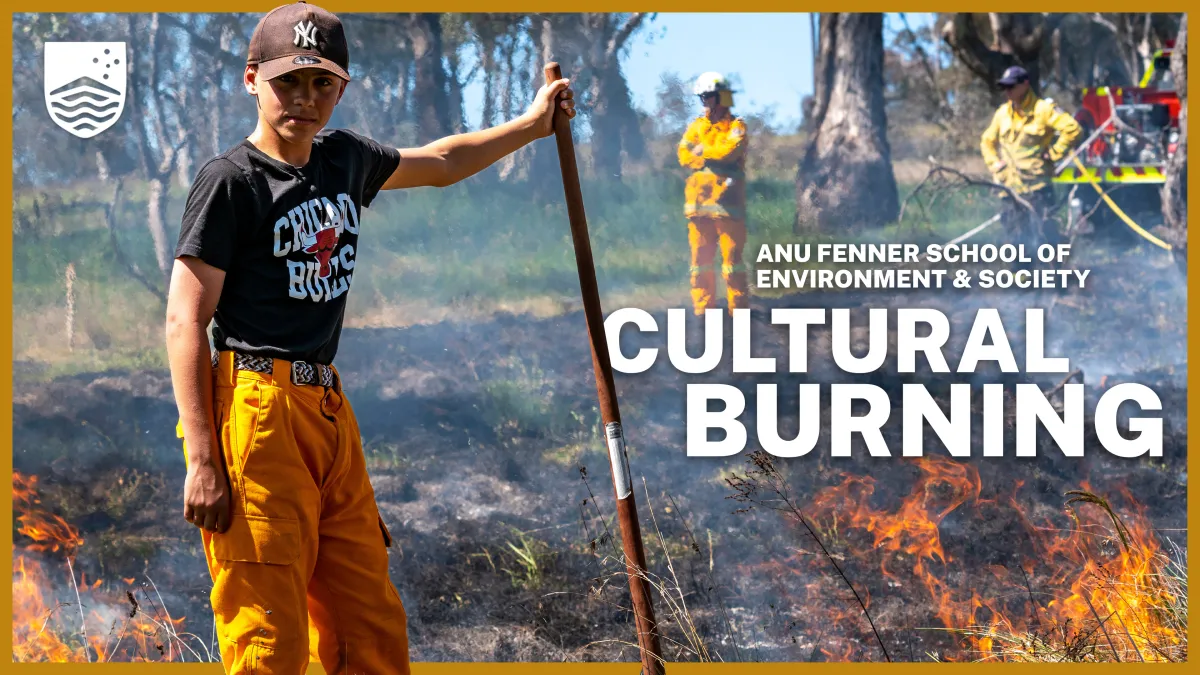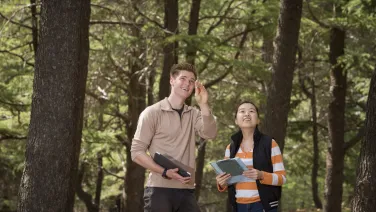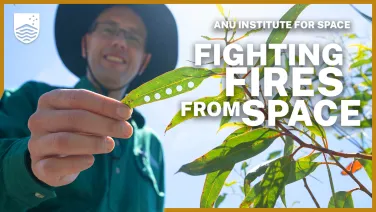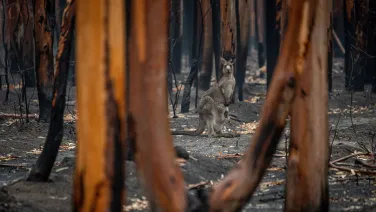
Supporting the re-emergence of cultural burning in box-gum grassy woodlands
Many Australians understandably see fire only as a danger, based on collective experiences of devastating bushfires.
But if used in the right way, fire can also be a tool that benefits the landscape and reduces the impact of bushfires themselves.
“Our environment has depended on fire for thousands and thousands of years,” says Bradley Bell, a Ngunnawal Traditional Custodian who practices cultural burning.
That’s why ANU ecologists and a cohort of New South Wales Local Aboriginal Land Councils are joining together on a project to re-introduce cultural burning in box-gum grassy woodlands and to monitor the environmental outcomes of the burns.
Cultural burning is when First Nations people use fire to manage the landscape in a way that benefits the whole ecosystem, using Traditional Knowledge to care for Country.
As Senior Land Services Officer Dean Freeman explains in the above video, a calm burn ensures that small animals have time to move away from the fire, and limits the temperatures of the fire, making it easier to control.
The fire from the lower-intensity burn triggers new growth, without the destruction of a fast, extremely hot fire. Importantly, it also aims to reduce the impact of bushfires on the ecosystem.
“We really want to empower First Nations communities in restoring traditional burning practices,” says Dr Elle Bowd from the ANU Fenner School of Environment and Society, who is leading the research alongside Professor David Lindenmayer.
Their research is tracking how the environment compares before and after cultural burning takes place.
“These systems have been unburnt for hundreds of years, so it’s critically important to monitor how they respond to the reintroduction of these kinds of practices so we can inform future monitoring programs,” explains Dr Bowd.
During 2023, local Ngunnawal and Wiradjuri community members led cultural burns on their respective Countries and 40 community members were sponsored to gain firefighting and safety training with the Rural Fire Service.
Already, a team near the town of Boorowa made a discovery of 120 plants of an endangered small scurf-pea (Cullen parvum), previously unknown in that area, which appeared after cultural burning had taken place. It’s an exciting example of how a threatened species can respond positively to the burns.
As well as the environmental benefits, cultural burning has multiple dimensions for First Nations practitioners: it is spiritual, cultural and social.
It’s also a way to share knowledge across generations, as Bradley Bell has done with his son, Braithan.
“I think bringing two really strong knowledges together is the best way of moving forward,” Braithan Bell says.
“We have a strong, intangible connection to our Country and we see Country from a different perspective, but how western science collects and coordinates that data is really interesting for me.”
The science backs up the work First Nations people have been doing, and will continue to do, for generations to come.
This is a joint project between ANU, NSW Local Services and Onerwal, Young and Wagga Wagga Local Aboriginal Land Councils, with management support from ANU Enterprise. The project is funded under the Disaster Risk Reduction Fund (DRRF). The DRRF is jointly funded by the Australian and NSW governments.
You can donate to this project at the Cultural burning in endangered grassy woodland fund.












